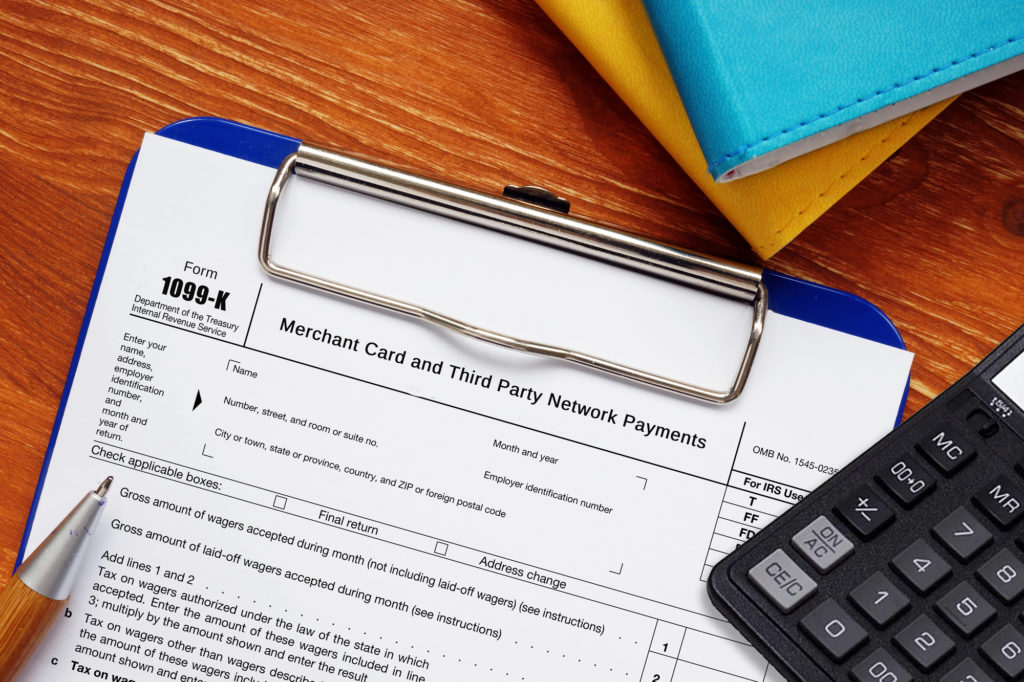 Third-party payments over a threshold amount must be reported annually to the IRS. This is done on Form 1099-K. Who does the reporting, what are the new thresholds for reporting, when do they apply, and how do they affect tax reporting? It’s not as complicated as you may initially think.
Third-party payments over a threshold amount must be reported annually to the IRS. This is done on Form 1099-K. Who does the reporting, what are the new thresholds for reporting, when do they apply, and how do they affect tax reporting? It’s not as complicated as you may initially think.
Who files the forms with the IRS?
Form 1099-K, Payment Card and Third Party Network Transactions, is filed by third-party settlement companies. This includes banks and payment processors, such as PayPal, that handle your credit and debit card payments as well as electronic payments. It also includes payments made via Venmo, Cash App, and other such apps.
What’s the threshold for reporting?
For payments in 2021, reporting is done if the recipient had more than 200 transactions totaling more than $20,000.
The American Rescue Plan Act changed the threshold for the reporting of payments in 2022. The threshold now is a flat $600 or more for payments for goods and services during the year. The number of transactions no longer affects reporting. Forms 1099-K received in 2023 reflecting 2022 payments will be based on the new threshold amount.
Note: Some states have their own filing thresholds that may be more stringent that those of the federal government for 2021 payments reported on 2022 returns. For example, Massachusetts and Vermont require reporting of 2021 transactions in 2022 for payments of $600 or more.
How does this impact recipients’ tax reporting?
The amount reported to you on Form 1099-K is not necessarily the income reported on your return. The form doesn’t reflect any adjustments for credits, cash equivalents, discount amounts, fees, refunded amounts, or any other amounts. And there’s no requirement to reconcile the payments reported on Form 1099-K with the income reported on your return.
However, the purpose of this information reporting is to alert the IRS to taxpayer activities that might otherwise fall under the radar and go entirely unreported. For example, when Congress changed the reporting threshold last year, it was done with the idea that many taxpayers in the gig economy were underreporting or not reporting their income.
Bottom line: Be sure that amounts reported on Form 1099-K are factored into the gross receipts reported on your return and that your books and records reflect your actual gross receipts.
What to do if the 1099-K isn’t correct?
Be sure that any information return you received properly reflects your transactions. The IRS says to be sure the 1099-K belongs to you (it’s got your correct name and tax identification number), the amount reported is correct, and the Merchant Category Code (MCC) in box 2 correctly describes your business. The MCC is a 4-digit code used by the card payment industry to classify recipients for which payments are being reported; it’s based on the goods and services being sold. Examples include contracted services, clothing stores, business services, and transportation services (e.g., Uber and Lyft). The MCCs are set by the processor, so the codes can vary according to the processors you use. Citibank’s Merchant Category Codes can be found here.
If there are mistakes, it’s worth your efforts to get them corrected so the IRS doesn’t think that those reported transaction amounts belong to you. For example, if the form was issued to you personally but the transactions were done by your business—a corporation or partnership—this needs to be corrected. Contact the Payment Settlement Entity (PSE) listed on the form to request a corrected Form 1099-K. There should be a telephone number on the form that you can use for this purpose.
Final thought
The IRS says “Third party information reporting has been shown to increase voluntary tax compliance and improve collections and assessments within IRS.” Whether your business is your full-time endeavor or a sideline activity, be sure to report all your income. Use the information on Form 1099-K to help with this reporting requirement.


